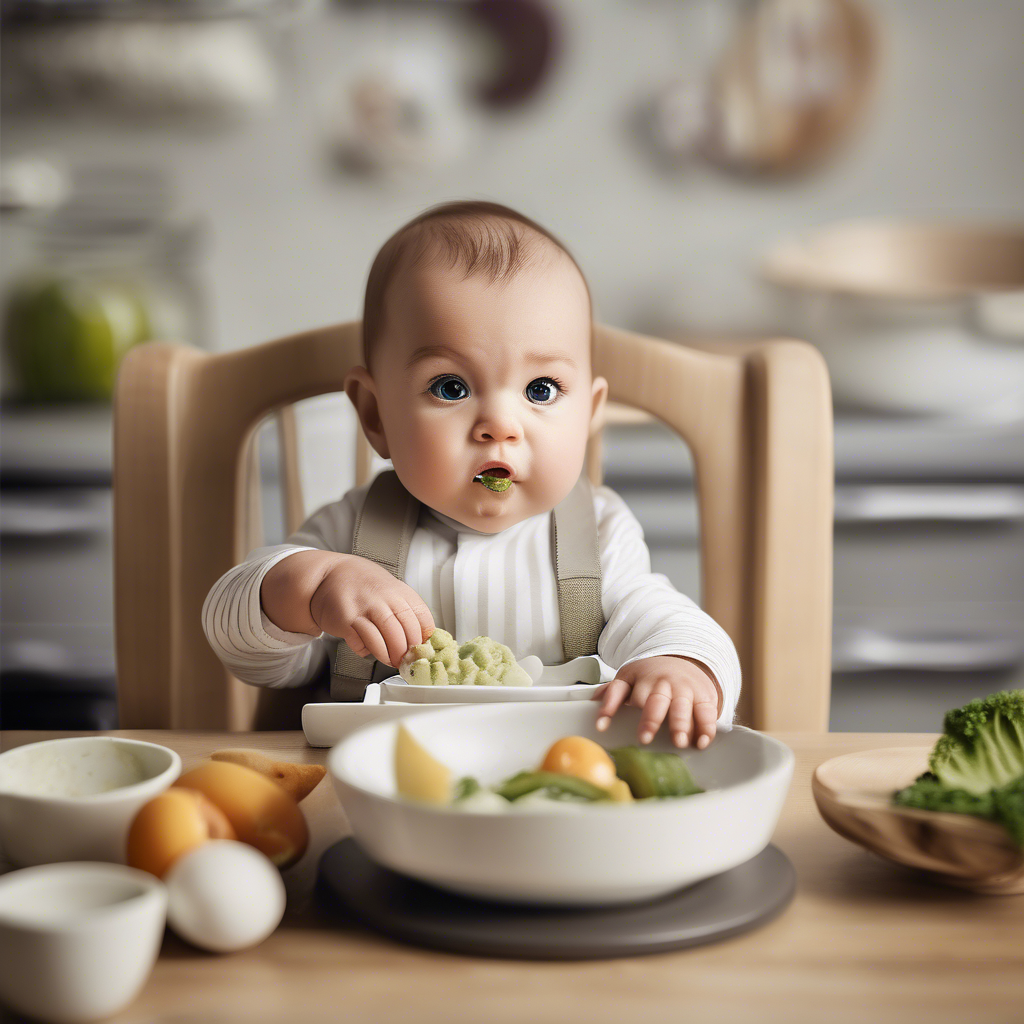Introducing Solid Foods: The Ultimate Guide to Baby’s First Meals

Welcoming a baby into the world is a journey filled with milestones, and one of the most significant is introducing solid foods. As parents, the transition from milk to solids can be both exciting and daunting. Understanding the nuances of this process can set the stage for a lifetime of healthy eating habits.
The topic of starting solids for babies is more relevant today than ever, as parents are increasingly aware of the importance of nutrition in early childhood development. With the rise of information and varying opinions, it’s essential to have a reliable baby feeding guide to navigate this crucial phase effectively. This article aims to provide comprehensive insights into introducing solid foods, offering practical tips, real-world examples, and data-driven recommendations.
In this guide, you will learn about the ideal age to start solids, the best first foods for babies, and strategies to ensure a smooth transition. We will also discuss the role of water intake recommendations for new moms, as hydration plays a critical role in both maternal and infant health. Let’s embark on this informative journey to make baby’s first meals a delightful and nutritious experience.
When to Start Solids: Understanding the Timing
Determining the right time to introduce solid foods to your baby is crucial. The World Health Organization recommends starting at around six months of age. This timing aligns with the baby’s developmental readiness and nutritional needs. However, every child is unique, and some may show signs of readiness slightly earlier or later.
Signs that your baby is ready for solids include the ability to sit up with minimal support, showing interest in food, and the disappearance of the tongue-thrust reflex. Parents should also consider their baby’s growth patterns and consult with pediatricians to personalize the timing of baby food introduction.
Real-world examples highlight that some babies may start solids at five months due to increased appetite or medical recommendations, while others may wait until seven months. It’s essential to monitor your baby’s cues and consult healthcare professionals to determine the best time for your child’s development.
Choosing the First Foods for Babies: A Nutritional Guide
The choice of first foods for babies is pivotal in shaping their palate and nutritional intake. Experts often recommend starting with iron-rich foods like pureed meats, fortified cereals, or legumes. Iron is vital for babies at this stage, especially as their stores from birth begin to deplete around six months.
Vegetables such as sweet potatoes, carrots, and peas are excellent options due to their nutrient density and easy digestibility. Introducing a variety of flavors and textures can help encourage a broader acceptance of foods as your baby grows. Include foods like avocado and banana, which offer healthy fats and are easily mashable.
Data shows that babies introduced to a wide range of foods early on are less likely to develop picky eating habits later. Parents should aim for diversity in their baby’s diet, gradually increasing the complexity of textures and flavors. This approach not only meets nutritional needs but also fosters a positive relationship with food.
Tips for a Smooth Transition: Making Baby’s First Meals Enjoyable
Starting baby on solids can be a joyful experience when approached with patience and creativity. Establishing a routine is helpful, such as offering solids after breastfeeding or formula, ensuring the baby is not too hungry or tired. This timing allows them to explore new foods without the pressure of immediate hunger.
Creating a positive mealtime environment is crucial. Use colorful utensils, engage in eye contact, and offer plenty of encouragement. It’s also important to introduce new foods one at a time, waiting a few days before adding another, to monitor any allergic reactions.
Parents can draw inspiration from cultures worldwide, where community feeding and the use of spices in purees are common practices. These strategies often lead to adventurous eaters. Remember, the goal is to make eating a pleasurable learning experience rather than a task.
Hydration and Nutrition: Water Intake Recommendations for New Moms
While focusing on the baby’s nutrition, it’s essential not to overlook the mother’s hydration needs. Adequate water intake supports breastfeeding and overall health. New moms are advised to consume at least 2.7 liters (91 ounces) of water daily, which includes fluids from all beverages and foods.
Staying hydrated is crucial, especially when adjusting to new routines and demands of motherhood. Drinking water regularly helps maintain energy levels, supports metabolic functions, and aids in milk production for breastfeeding mothers.
Incorporating hydrating foods like watermelon and cucumber into your diet can also contribute to your fluid intake. Monitoring your hydration status and adjusting as needed ensures that both you and your baby remain healthy and nourished during this transition phase.
For those who prefer visual learning, we have curated a complementary video that walks you through the process of introducing solid foods to your baby. This video provides step-by-step guidance and practical demonstrations to help you confidently embark on this new journey.

Frequently Asked Questions
When is the right time to introduce solid foods?
The ideal time to start solids is around six months of age, as recommended by the WHO. However, monitor your baby’s developmental signs, such as sitting up and showing interest in food, to determine readiness.
What are the best first foods for babies?
Iron-rich foods like pureed meats and fortified cereals are excellent first choices. Vegetables such as sweet potatoes and carrots, along with fruits like avocado and banana, provide essential nutrients and are easy to digest.
How can I ensure my baby adapts well to solid foods?
Introduce new foods gradually, one at a time, and create a positive eating environment. Use colorful utensils, engage with your baby, and offer foods when they are not too hungry or tired to encourage exploration.
How important is hydration for new moms?
Hydration is crucial for new moms, especially those breastfeeding. Aim for at least 2.7 liters of water daily, including fluids from all sources, to support energy levels, metabolism, and milk production.
What should I do if my baby refuses solid foods?
If your baby refuses solids, stay patient and try different foods and textures. Reintroduce foods after a few days, and consult healthcare professionals if concerns persist to ensure there are no underlying issues.
Conclusion
Introducing solid foods is a significant step in your baby’s growth journey. By understanding the ideal timing, selecting nutritious first foods, and fostering a positive mealtime atmosphere, you can ensure a successful transition. Remember to prioritize your hydration as a new mom to support both you and your baby.
As you embark on this exciting chapter, continue to observe your baby’s cues and consult with healthcare providers for personalized advice. Embrace the process with patience and creativity, knowing that your efforts lay the foundation for your child’s lifelong healthy eating habits.
To further enrich your understanding, explore topics like “The Benefits of Baby-Led Weaning,” “Navigating Food Allergies in Infants,” and “Creating Balanced Meal Plans for Toddlers.” These complementary readings will provide additional insights into nurturing your child’s nutritional journey.




